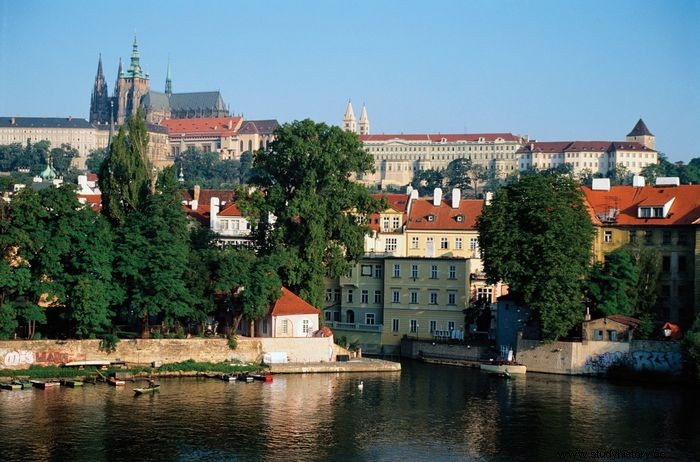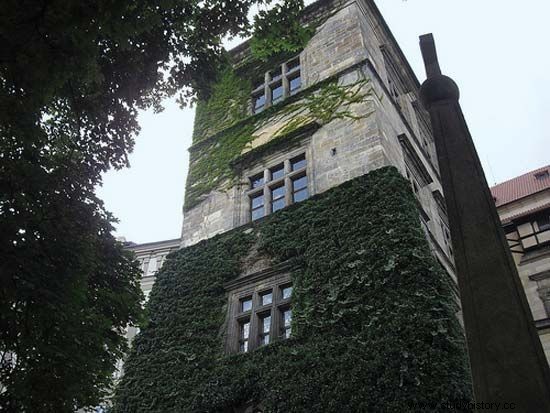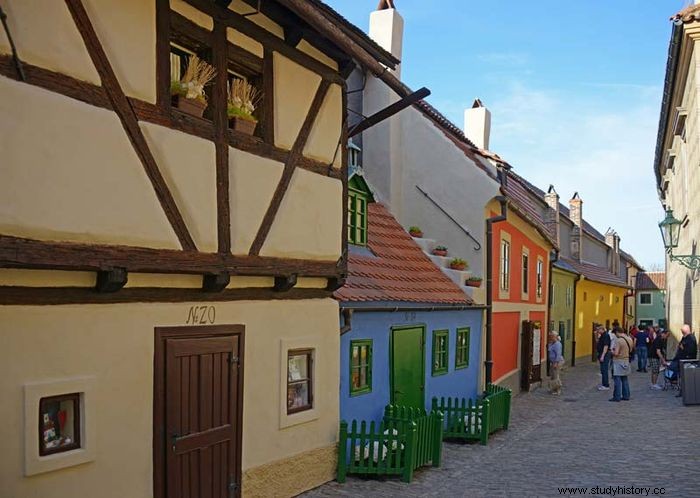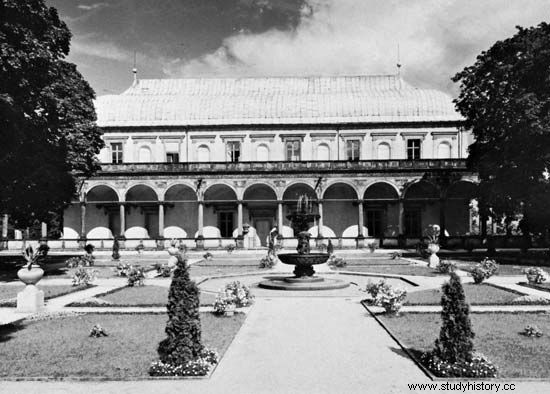Prague Castle , Czech Pražský hrad , also Hradčany called , Collective term for a collection of palaces, churches, offices, fortifications, courtyards, and gardens in Prague on a area of approximately 45 hectares. The Castle used to be the headquarters of bohemian Kings and is currently the official residence of the President of Czech Republic . It is located in the historical center of Prague, a UNESCO World Heritage Site .

Prague Castle dates back to the late 9th century during the reign of Bořivoj, the first Christian prince of Bohemia. The Church That Became St George's Basilica was begun around 920; The basilica still stands today as a monument Romanesque architecture . The Martyr Prince Wenzel I. (the "good King Wenceslaus" of the Christmas carol) was buried in 932 AD St Vitus Church , predecessor of a cathedral dedicated to the same saint. The foundation stone for St. Vitus Cathedral was laid in 1344 at the behest of Charles IV , The future King of Bohemia and Holy Roman Emperor , placed on Hradčany hill . The Architect Petr Parléř gave the cathedral its late Gothic style, but construction was not completed until 1929. A Cathedral vault preserves the Crown Jewels Bohemians that are not normally on public display.
The old royal palace was built in Romanesque masonry by Prince Soběslav in the 12th century to replace the original wooden palace buildings . It was created by Charles IV And his son Wenzel IV. Advanced and substantially rebuilt after 1483 by Vladislav II. Vladislav Hall (1493–1510) is a room in the Old Royal Palace designed by architect Benedikt Ried. It displays both late Gothic and Renaissance architectural features. The council chamber was Location the Defenestration of Prague (1618), a violent Manifestation of the bohemian nationalism followed closely by the Thirty Years' War (1618–48). The New Royal Palace, which gradually took shape in the late 16th and early 17th centuries, now houses Czech government offices. Official ceremonies take place in the Throne Room, Spanish Hall, and other major chambers.

To the north of the fortified part of the castle is Golden Lane, a street of small terraced houses originally built for royal Alchemists and other castle servants were built. The Writer Franz Kafka lived there from 1916 to 1917. Golden Lane is flanked by two round towers:the Daliborka Tower (on the east side) and the New White Tower (to the west). Both were built in the 15th century and were infamous prisons. Further north, behind the Hirschgraben (a canyon where once Deer held), is the royal garden. On the southern edge is the Ballspielhalle (1567–69), which was built as a gymnasium and is now used for exhibitions and concerts. Nearby is the Summer Palace (1538–60; sometimes called called Belvedere) or Queen Anne's Summer Palace), which is also in the Renaissance style was built.


